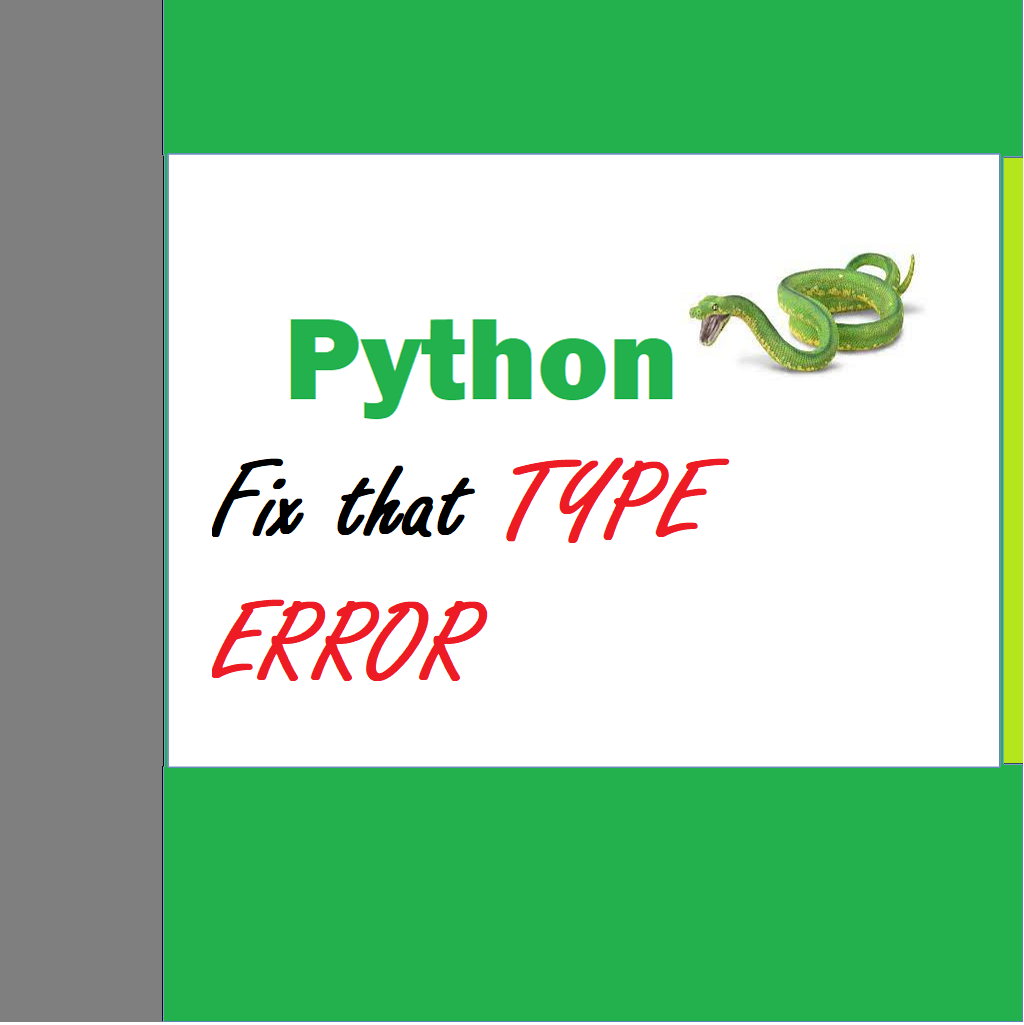More specifically TypeError: missing 1 required positional argument
Python, known for its readability and versatility, empowers developers with a dynamic typing system. While this flexibility is a strength, it also introduces the possibility of type errors. Understanding and effectively handling these errors is crucial for maintaining code integrity and reliability. In this guide, we delve into the world of Python type errors, exploring their types, causes, and strategies for effective resolution. More specifically Python TypeError.
There are a few ways you can fix this error
- Using the annotation for the method
- Using self in the method
For example: Consider this file fruits.py
class Fruits():
def fruitOrange():
some code lines come here
def fruitGuava():
print ("I am guava. Eat Me!")
some code lines come here
FR = Fruits()
FR.fruitGuava()
----------------------------
To fix this error you must specify "self" in the method
Example:
def fruitGuava(self):
print ("I am guava. Eat Me!")
some code lines come here
OR add the annotation like below for the class to depict it is a static method. For example we can change the class look like below
class Fruits():
@staticmethod
def fruitOrange():
some code lines come hereWhen you do this i.e. you add the @staticmethod annotation or decoration before the method, you can do away with adding self argument to the method.

Mastering the art of handling Python type errors is essential for writing robust and reliable code. This comprehensive guide equips developers with insights into the types, causes, and effective strategies to address type errors, promoting cleaner and error-resistant Python programs. By adopting these practices, developers can enhance code quality and foster a more resilient software development process.
Related:
https://learnxyz.in/metasploit-understanding-it/






An interesting topic and I’m glad to come across your page where I found some helpful insights. Check out my website QU9 too, if you need additional resources about Thai-Massage.